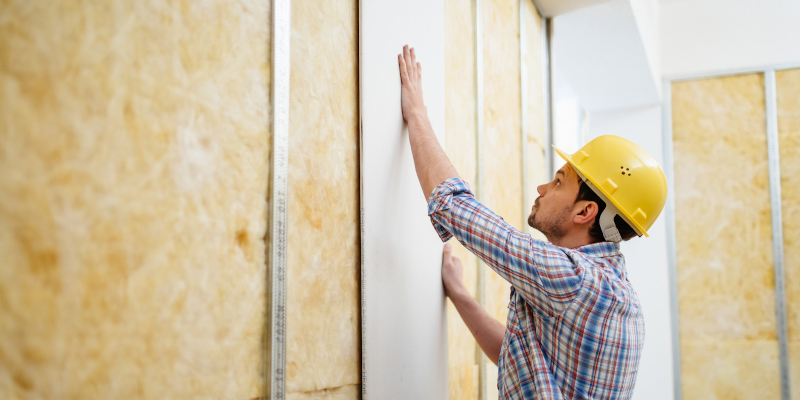Efficient Drywall Repair Techniques to Restore Your Walls
Efficient Drywall Repair Techniques to Restore Your Walls
Blog Article
Drywall Installment Made Easy: Tips for Perfect Results
Drywall setup is often regarded as a challenging job, yet with the best strategy and understanding, it can come to be a manageable undertaking. Grasping strategies for cutting, hanging, and completing drywall can significantly affect the end result.
Choosing the Right Materials
Picking the ideal materials for drywall installment is critical to attaining a long lasting and visually pleasing coating. drywall repair. The key component, drywall sheets, usually can be found in numerous densities, with 1/2-inch sheets being basic for indoor wall surfaces. For locations requiring additional dampness resistance, such as bathrooms or kitchen areas, take into consideration using green board or cement board, which are specially developed to endure humidity

In addition, picking the right bolts-- either nails or screws-- is crucial for safeguarding the drywall to the framework. Drywall screws are normally favored for their holding power and lowered danger of standing out. Last but not least, take into consideration the complements such as primer and paint, which not only boost the look however also protect the drywall from dampness and wear.
Preparing the Installment Area
Prior to beginning the drywall installation procedure, it is important to prepare the installment location thoroughly. A clean work space reduces the risk of damages to existing items and enables for reliable movement throughout installment.
Next, inspect the wall surfaces and ceiling for any kind of flaws, such as splits, openings, or mold. Address these problems ahead of time; patch any kind of damages and allow adequate time for fixings to dry. Furthermore, make sure that electrical outlets, buttons, and pipes are correctly placed and made up, as this will certainly impact drywall placement.
Take into consideration the ecological problems too. A secure temperature level and moisture level are essential for optimum attachment and performance of the drywall products. If necessary, make use of a dehumidifier or heating system to create appropriate problems.
Trimming and Hanging Drywall
The secret to reliable drywall installation hinges on the exact cutting and dangling of the panels. Begin by measuring the area precisely, taking into account any type of blockages such as electrical outlets or home windows. Make use of a straight edge and an utility blade to score the drywall along your measurements, then snap it along the racked up line for a tidy break. For even have a peek here more detailed cuts, such as around outlets, a drywall saw can be used for accuracy.

Constantly work from the top down and entrusted to right, guaranteeing that you maintain a staggered pattern to boost stability. Effectively hanging the drywall establishes the foundation for a smooth finish, ultimately bring about superior lead to your drywall job.
Insulation and Mudding Strategies
While correct cutting and hanging of drywall sets the stage, the top article next crucial step entails grasping taping and mudding methods to ensure a seamless surface. Taping is crucial for reinforcing joints and protecting against fractures; it includes installing tape right into the applied joint substance (mud) Start with a high quality fiberglass or paper tape, using the tape over the joint and pressing it right find out this here into the damp mud using a taping knife, ensuring no air bubbles stay.
Once the tape remains in area, use a thin layer of joint substance over the tape, feathering the edges to develop a smooth change to the drywall surface. Enable this layer to completely dry entirely prior to sanding it gently to remove imperfections. Repeat this procedure, applying extra layers of mud as needed-- commonly a couple of layers-- while progressively broadening the application area with each layer to attain a seamless appearance.
After the last layer dries, sand the surface area with a fine-grit sandpaper up until smooth. sheetrock repair fort worth. Bear in mind to use a mask throughout fining sand to stay clear of breathing in dust particles. Grasping these taping and mudding techniques is essential for accomplishing a professional-quality finish in your drywall setup
Ending Up Touches for Perfection
Achieving a flawless drywall setup goes past taping and mudding; it finishes in the finishing touches that raise the total look. These last actions are critical in guaranteeing a professional-grade coating that boosts the appearances of your room.
Begin by fining sand the dried joint compound to produce a smooth surface. Utilize a fine-grit sandpaper and a fining sand block or pole sander for optimal control. Pay specific attention to sides and corners, as these areas have a tendency to call for even more meticulous job. After sanding, wipe down the wall surfaces with a wet cloth to eliminate any dust bits, making certain a tidy surface area for painting.
Following, apply a guide specifically made for drywall. This step is necessary, as it helps seal the joint substance and provides a consistent base for the overcoat. Once the primer dries out, inspect for any type of imperfections, and repair as required.
Final Thought
In conclusion, successful drywall installation hinges on the careful selection of materials, extensive preparation of the installation location, and specific execution of cutting and hanging techniques. Proficiency of taping and mudding processes is important for achieving a smooth coating.
Drywall installment is usually perceived as a complicated job, yet with the right technique and understanding, it can come to be a convenient undertaking.Choosing the ideal materials for drywall setup is essential to accomplishing a sturdy and aesthetically pleasing finish.Prior to starting the drywall installation procedure, it is necessary to prepare the installment area thoroughly. Mastering these taping and mudding methods is vital for achieving a professional-quality surface in your drywall setup.
In verdict, successful drywall installment pivots on the careful option of materials, extensive prep work of the setup location, and accurate execution of reducing and hanging techniques.
Report this page